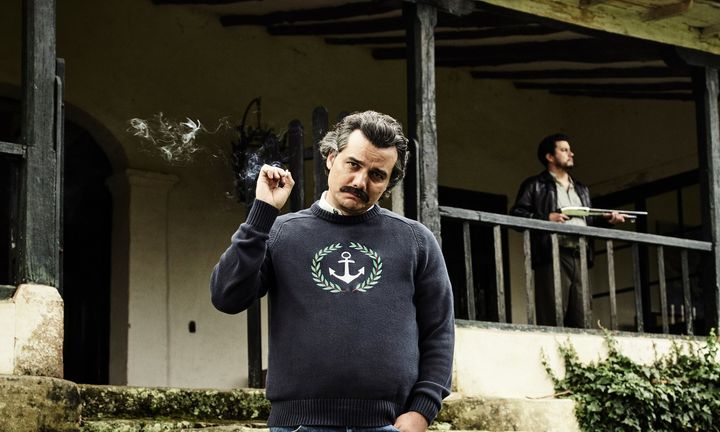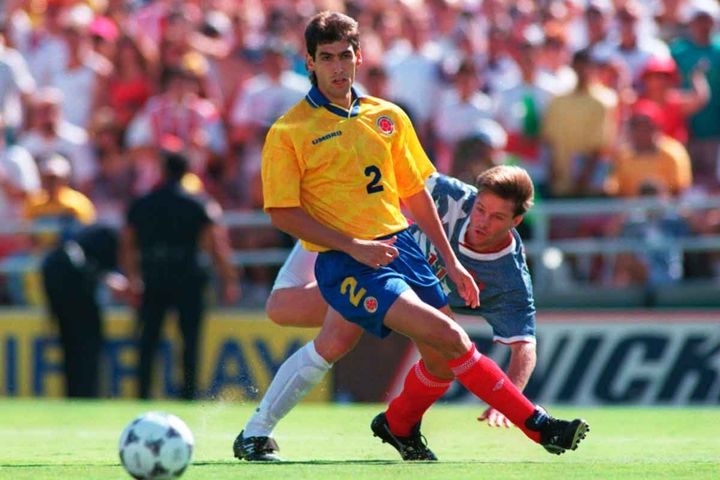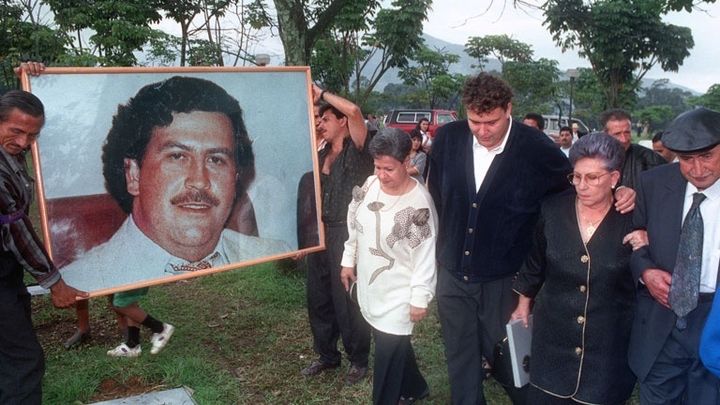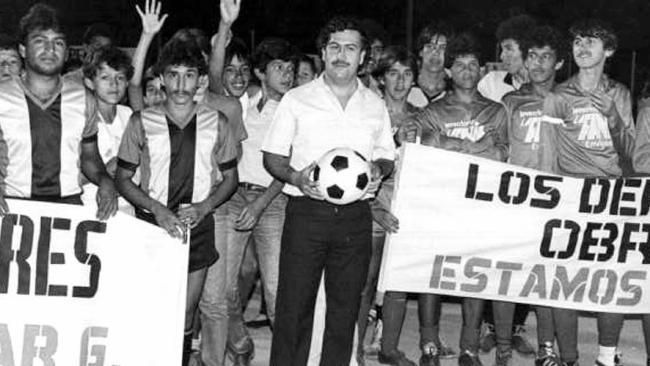
With Season 2 of Netflix’s hit series, Narcos drawing to a close more and more people are delving into the life of the World’s Richest Criminal, Pablo Escobar. One contribution that the series neglects to credit Escobar for was the creation of narco-soccer.
Two things spring to mind when Colombia is mentioned; Football and Drugs, and the name Escobar is deeply entangled with both. At first glance, Pablo and Andrés Escobar have little in common apart from their last names. One was the world’s wealthiest drug lord, and the other the Captain of the Colombian National Football team.
It was Pablo Escobar’s love of football that gave young, aspiring players like Andrés a platform to play, and it was talented players like Andrés that made it possible for Pablo Escobar to legalize his profits from trafficking. Drugs and football influenced every individual in Colombia, from the richest to the poorest. The rise of narco-soccer in Colombia elevated football from a sport, to a factor that has dramatic effects on politics, culture and society, and eventually culminated in the death of a football player for a mistake on the field.
Colombia made its debut at the FIFA World Cup of 1962; however, it failed to get past the group stage. It next qualified 28 years later, in the World Cup of 1990, similar to ’62, it failed to get through to the next round. This was also the case the next two times Colombia qualified in 1994 and 1998. The FIFA World Cup of 2014 is the first time in Colombian history that it has made it past the group stage and as far the quarter-finals.
Out of the five world cups that Colombia qualified for, none is more significant than the World Cup of 1994. After an extremely impressive World Cup campaign, the Colombian team, who had just destroyed Argentina’s 30-game winning streak with an incredible 5-0 victory, was the favorite going in.
Under Francisco Maturana, the team boasted some of the most talented athletes to have ever played for the Colombian side, including Antony de Avila, Carlos Valderrama, Adolfo Valencia, and Faustino Asprilla and of course, Andrés Escobar.
As the political situation in Colombia continued to escalate, more and more people were pinning their hopes on the World Cup to combat despair. Colombia’s 3-1 loss in their first game of the Cup against Romania, “marked the beginning of a psychological crisis for which the team wasn’t prepared.” Family members of the team were threatened, defender Luis ‘Chonto’ Herrera’s son was kidnapped, and his brother killed, and on the morning of their game against USA, the team received a threat that stated that if key midfielder Gabriel ‘Barrabas’ Gómez played, the entire team would be murdered.
Colombia lost to the US with a score of 2-1, with the first goal of the game going to Colombian Captain Andrés Escobar against his own side. Andrés Escobar was murdered upon arrival in Colombia. There were more than 100,000 Colombians, including president Cesar Gaviria, present at Andrés’ funeral.
One cannot talk about the rise of football in Colombia without talking about Pablo Escobar. He was the wealthiest criminal the world has ever seen, a notorious drug lord, responsible for the murder of judges, politicians, 500 policemen and thousands of rival cartel members, but was also a member of the Chamber of Representatives of Colombia as part of the Colombian Liberal Party, and represented Colombia in the swearing in of the Spanish Prime Minister, he was responsible for constructing and funding hospitals, building homes for thousands of slum-dwellers, and perhaps most significant to this article, for the construction of hundreds of football fields, sponsoring children’s teams, purchasing Athlético Nacional, and pioneering narco-soccer.
Born into poverty, Pablo Escobar turned to crime at an early age. He began his criminal career stealing tombstones for smugglers from Panama, before he entered the cocaine trade in his early 20s. He oversaw the purchase of raw cocaine from Bolivia and Peru, had it processed and then sold in the US, eventually forming the Medellin Cartel. At its height, the cartel earned nearly $60 million a day. Escobar needed a means to legitimize this amount; he turned to football and purchased the club Atlético Nacional. Thus, narco-soccer was born.
Narco-soccer is the term given to the use of football in money-laundering to legalize income from drug trafficking. By exaggerating the profits from ticket sales, the Medellin Cartel managed to legalize their income. However, football wasn’t a mere tool to legitimize dirty money; it was also Escobar’s passion. He used his funds to retain talented local players and entice foreign players to play for Colombia as well as operating various football camps around the country. It was at one such camp that, Andrés Escobar, the late Colombian Captain, was scouted.
Coached by the incredible Francisco Maturana, and captained by the Caballero del Fútbol, or the Gentleman of Football, Andrés Escobar, and funded by the limitless pool of Pablo Escobar’s wealth, it was no surprise that the Colombian team was beginning to garner an impressive reputation. Not only did they beat rival Argentina in a humiliating 5-0 victory, but they also became the first Colombian team to have won the Copa Libertadores de América, one of the most prestigious tournaments in both South America and the rest of the world. Football was becoming so much more than a game. Millions of Colombian citizens pinned their hopes on the team to combat Colombia’s image as a nation overcome with drugs and violence.

As the Atlético Nacional and the Colombian national team garnered more and more success, the Medellin Cartel’s reputation of notoriety grew. Pablo Escobar’s empire went beyond his army of criminals, it included mansions spread across Colombia, private airstrips, private zoos and personal wealth of approximately $24 billion. Pablo Escobar’s increasing wealth was attracting international attention. The United States wanted him extradited to face drug charges.
By 1991, the Colombian government was feeling considerable pressure to extradite Escobar. However, any action taken in that direction left a wake of blood as Escobar ruthlessly murdered anyone who opposed him. Eventually, Los Pepes was formed. Los Pepes, or Perseguidos por Pablo Escobar, translates to People persecuted by Pablo Escobar.
The vigilante group, financed by rival Cali Cartel, had decided to fight fire with fire, and threatened to take out Escobar’s family if he didn’t turn himself in. Escobar agreed to turn himself in, but on certain conditions. He would only serve five-years, he build his own prison and would not be extradited to the United States or anywhere else. The prison, known as La Catedral, had a jacuzzi, a waterfall, a bar and a football field. Even the guards stationed at La Catedral were of Escobar’s own choice. Thus, the Medellin Cartel continued business as usual.
It wasn’t until the July of 1992, when Escobar ordered some disloyal underlings brought to his ‘prison,’ where they were tortured and killed, that the Colombian government couldn’t continue to feign ignorance. They decided that he needed to be moved to regular prison. Fearing extradition, Escobar escaped and went into hiding. What ensued was a two pronged man hunt spearheaded by the Search Bloc, a US-trained Colombian task-force, and Los Pepes. By December 1993, Pablo Escobar was dead.

Millions of Colombians wept at his death, some out of a sense of loss for their very own Robin Hood, others in fear. Escobar had ruled the underworld of Colombia with an iron fist. He put in place laws, if you wanted to do anything illegal, you needed his permission. With him gone, Colombia descended into anarchy. The importance of football as an escape grew even more, the Colombian national team had been entrusted in redeeming Colombia’s image in the eyes of the world, a daunting task, even for their capable shoulders.
However, not all Colombians were as patriotic nor did they all hold such noble aspirations for the national team. The team had begun to receive death threats, something that could never have occurred if Pablo Escobar had been alive. The death threats received prior to the Cololmbia-USA match in the World Cup of 1994, had insisted that if veteran midfielder Barrabas had been allowed to play then the entire team would be murdered. Maturana was forced to replace a key player minutes before the game. The threats were issued as a result of regional rivalries back in Colombia, patrons wanted their players to be seen playing at an international level to increase their value, and were willing to sabotage the national team to ensure that happened.
Regional rivalry between clubs was no new phenomenon in Colombia, but rather a side-effect of the structure of Latin American football. Author of ‘Overcoming Escobar: Creating a Sustainable Future for Colombian Soccer Initiatives,’ Cassandra Dutt differentiates Latin American football from its North American counterparts. Unlike in North American sports organizations, “teams are structured as clubs. Apart from holding season tickets, fans can purchase membership to a club and have access to amenities, spaces, and social networks. Clubs have a president and board of trustees who are responsible for managing finances, hiring coaches, and recruiting players.”
This structure leads to the association of teams with socio-economic classes, ethnicities and political affiliations, and thus tends to “pit city, ethnic, and class identities against each other and has been instrumental in the violent history in the Colombian professional league.”

Football had gone from being a mere sport, to a tool to fix Colombia’s fractured image, to a battlefield for social tension.
With the death of its patron saint, Pablo Escobar, Colombian football, along with the rest of Colombian society, imploded spectacularly. It is said that Andrés Escobar’s assailants shouted “Goaaaal!” in the manner of sports commentators with every one of the six bullets they fired into him.
“Society believed that soccer killed Andrés, but Andrés was a soccer player killed by society.” Francisco Maturana, former Columbian National Coach.
Football had given a Colombian’s a reason to hold their heads high, if only for a short time. However, Colombian football without drug money and Pablo Escobar would not have been possible. Sixty million dollars in drug money stirred into a football structure still raw with regional rivalries made for an extremely volatile situation that lead no only to the death of Andrés Escobar but to what seemed like the death of Colombian football.
It was after an absence of 12 years that Colombia qualified the FIFA World Cup of 2014, putting up a spectacular performance right up until the quarter finals, and with the young James Rodríguez winning the Golden Boot.
It was a performance to soothe the souls of both Escobars, finally proving Andrés famous last words:
“Life doesn’t end here.”
